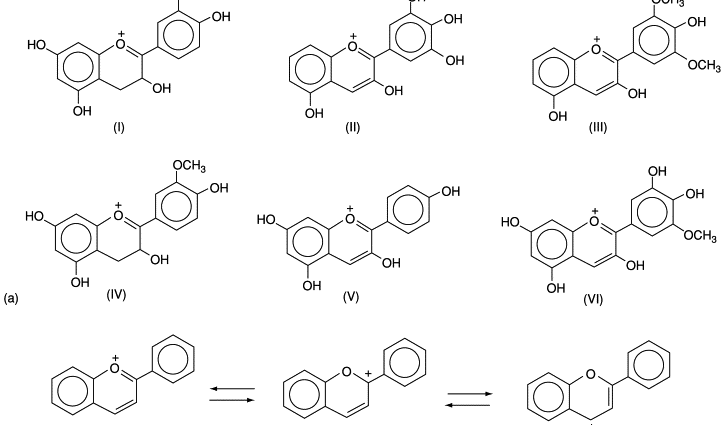Contents
In the plant world around us, pigments called anthocyanins are widespread. They are dissolved in the cell sap of plants. Anthocyanins are easy to extract from blue, pink, or red plants.
For example, red cabbage leaves, all kinds of berries and some herbs contain anthocyanin crystals. In this case, the color of crystals depends on the environment in which they are located.
For example, an acidic environment gives anthocyanins a deep red color. Alkali colors the crystals of anthocyanins blue. Well, in a neutral environment, they have a purple color.
Now, when you come to a grocery store, it will not be difficult for you to determine the acid-base balance of purchased vegetables and greens!
Anthocyanin-rich foods:
General characteristics of anthocyanins
Anthocyanins are plant pigments belonging to the group of glycosides. Their crystals are not associated with protoplasts (as in chlorophyll), but are able to move freely in the intracellular fluid.
Anthocyanins often determine the color of flower petals, the color of fruits and autumn leaves. Their color varies depending on the pH of the cell content and can change during the ripening of the fruit, or as a result of autumn leaf fall.
In industry, anthocyanins are extracted mainly from red cabbage or grape skins. In this way, red and purple dyes are obtained, which are then added to drinks, ice cream, yoghurts, sweets and other confectionery products.
On labels, the presence of plant pigments is usually indicated as E-163. The presence of these components in finished food products and vitamins is not only not harmful, but also beneficial for the body, this is stated in the complete reference book of dietary supplements.
Daily requirement for anthocyanins
Nutritionists recommend using anthocyanins in the amount of 10-15 mg per day.
In this case, you should not go to extremes. Eating a small amount of vegetables and fruits containing anthocyanins can lead to a decrease in the body’s defenses against cancer cells, excessive consumption can lead to allergic reactions of the body.
The need for anthocyanins increases:
- in an area with a lot of sunny days;
- in the case of a genetic predisposition to cancer;
- when working with high frequency currents, as well as with ionizing radiation;
- people who actively use mobile services.
The need for anthocyanins decreases:
- with individual intolerance to products containing anthocyanins;
- with various allergic reactions that occur after consuming such products.
Digestibility of anthocyanins
Anthocyanins are highly soluble in water, it is believed that they are absorbed by our body one hundred percent!
Useful properties of anthocyanins and their effect on the body
Anthocyanins are powerful antioxidants that protect our bodies from free radicals. They have a unique ability to resist ultraviolet light and reduce the risk of cancer.
Thanks to anthocyanins, aging processes are slowed down and some neurological diseases are treated. Anthocyanins are used to prevent and in combination therapy in the treatment of bacterial infections. Plant pigments can also help prevent diabetes or reduce its effects.
Interaction with essential elements
Anthocyanins interact well with water and all compounds capable of dissolving glycosides (plant substances that consist of a carbohydrate and non-carbohydrate component).
Signs of a lack of anthocyanins in the body:
- depression;
- prostration;
- nervous exhaustion;
- decreased immunity.
Signs of excess anthocyanins in the body
No such ones have been found at the moment!
Factors affecting the content of anthocyanins in the body
An important factor regulating the presence of anthocyanins in our body is the regular consumption of foods rich in these compounds.
Anthocyanins for beauty and health
In order for our skin to be velvety and silky hair, nutritionists advise to diversify the diet with plant foods containing anthocyanins. At the same time, all organs will be protected from the adverse effects of the external environment, and we will be calmer and happier!










